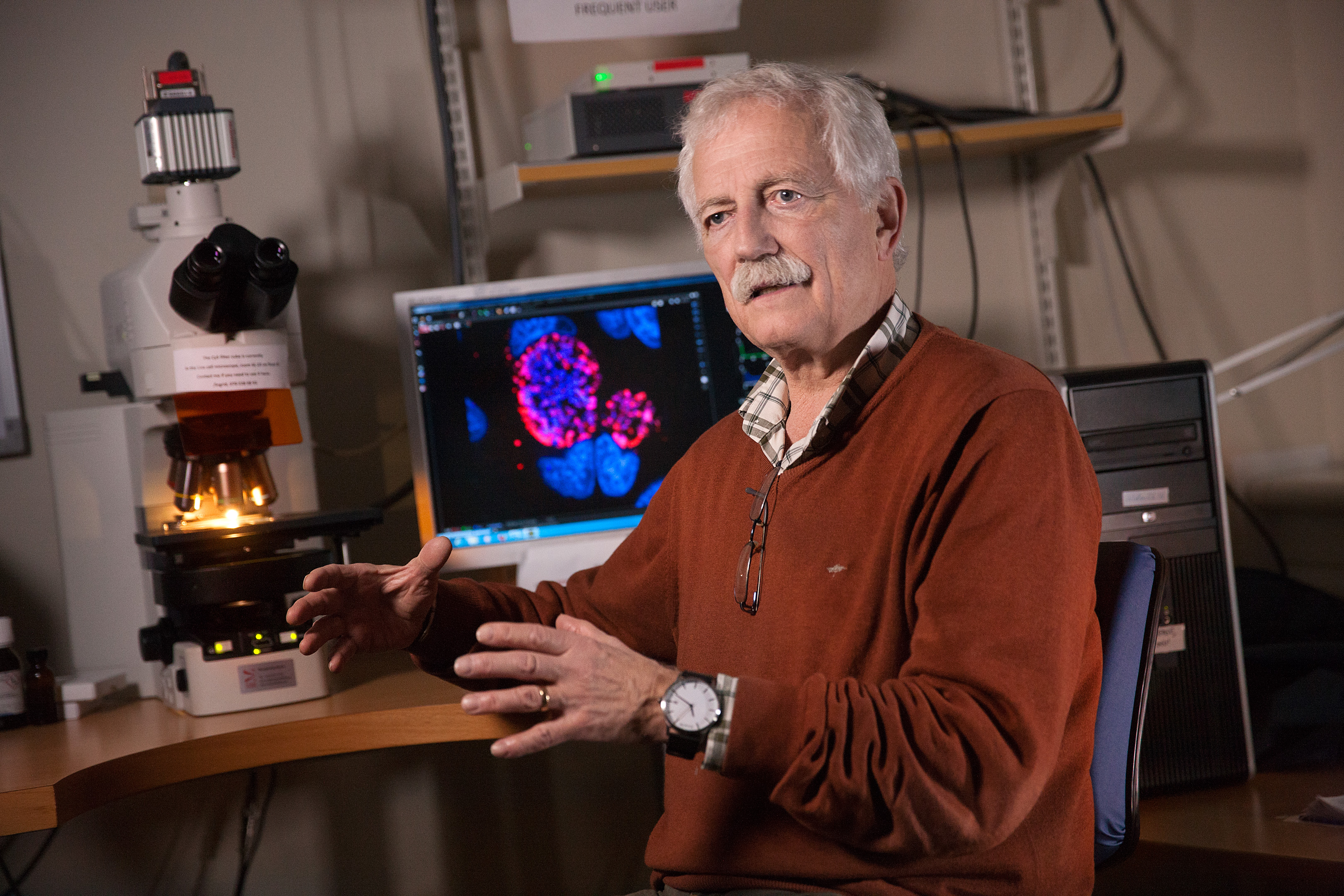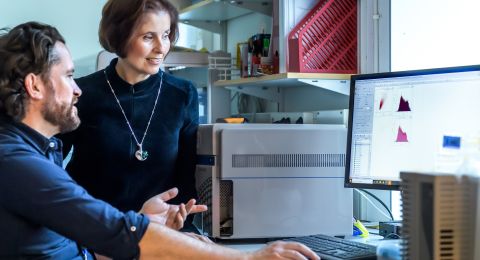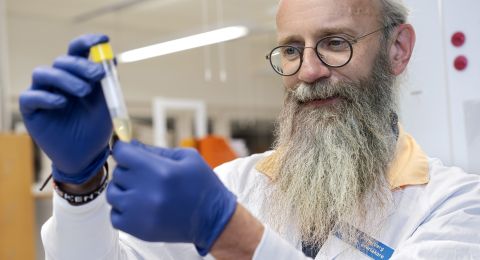
Project Grant 2013
Therapy for the future, disarming bacterial pathogens
Principal investigator:
Sven Bergström, Professor of Molecular Biology
Co-investigators:
Fredrik Almqvist
Jörgen Johansson
Elisabeth Sauer-Eriksson
Institution:
Umeå University
Grant in SEK:
SEK 33 million over five years
A committed team has gathered in Sven Bergström’s office. Fredrik Almqvist, Jörgen Johansson and Elisabeth Sauer-Eriksson take their places on the sofa. The four professors come from different scientific disciplines – microbiology, chemistry and structural biology – and are collaborating on a five-year project that has been awarded a grant by the Knut and Alice Wallenberg Foundation.
Our research teams complement one another really well. Also, Umeå offers a fairly unique opportunity for us to work in close proximity to each other. This makes it easy to collaborate,” says Professor Bergström, who has had a long and successful career researching in the field of infection biology, and is the principal investigator.
Hardly a day goes by without publication of some article on bacteria that have developed resistance to traditional antibiotics. It is a growing problem, and there is an urgent need for alternative treatment methods.
The aim of the research is to learn more about what happens in the interaction between bacteria and host cells when infection occurs,” Sven explains. This knowledge will be used to develop new substances capable of repressing the ability of bacteria to cause disease. Chlamydia, urinary tract infection, listeriosis and TB are some of the infectious diseases that the team is studying. “Within the time frame of this project, I believe we will find substances that can be tested on humans.”
Chemical molecules
The project is rooted in the expertise of the research teams in the field of “small molecules”, in particular a new class of chemical molecules called 2-Pyridones.
“We can use these molecules to neutralize the virulence of bacteria. In earlier studies we have succeeded in blocking the virulence of the E. coli bacterium that causes urinary infection,” explains Professor Bergström.

“It is a niche,” adds Professor Almqvist, who designs the molecules used in the studies. He sees good prospects of developing an alternative to the current antibiotics used to cure bacterial infections.
“Instead of killing the bacteria, as antibiotics do, we disarm them. The bacteria that cause disease then find it harder to survive, and our immune system is better able to wipe them out.”
Ointments an option
Early-phase collaborations with the pharmaceutical industry are in progress. An ointment for treating chlamydia is one potential approach. According to Professor Bergström, when the team has found a 2-Pyridone molecule that works they will be able to move on quickly to clinical testing on human subjects.
“Essentially, we can already block the infection in chlamydia; all that is needed is a little molecule. We also plan to ascertain whether this type of molecule works on Borrelia (which causes Lyme disease), a field I have specialized in,” he says.
The project will also examine whether certain members of the 2-Pyridones can be used to improve the efficacy of current antibiotics. Preliminary results have shown they can enhance the effect of Isoniazid, the most common antibiotic used in the prevention and treatment of tuberculosis.
“The long-term funding from the Foundation is enormously reassuring,” Professor Bergström stresses.
“Thanks to the grant we can carry out riskier experiments and have far greater capacity to carry out animal experiments. This means we can make more rapid progress. We have also been able to involve a network of eminent international researchers in the project, which is an enormous strength.”
Own molecule library
The 2-Pyridones that Professor Almqvist refines in his laboratory are the result of many years’ research by his team. Over the years he has built up his own library of compounds to browse among.

The molecules are made fluorescent to enable Professors Bergström and Johansson, who are both microbiologists, to see where they bind to the Chlamydia or Listeria bacterium, for example.
“We test which molecule is best, and identify different target proteins to which they bind. We hope to develop a medicine that can target those proteins and block them before they cause disease,” explains Professor Johansson.
Results show that, depending on how they have been refined, the 2-Pyridones can affect bacteria in various ways. In listeriosis, the molecules repress a regulatory protein, which is what starts the infection itself, and in chlamydia other 2-Pyridone members affect energy metabolism.
Molecules and target proteins are characterized by Professor Sauer-Eriksson, who is a structural biologist.
“My research team is examining how the various molecules bind to target proteins identified by Jörgen and Sven. Using X-ray crystallography we can obtain high-resolution images showing exactly how they bind. Fredrik can then use this information as a basis for making even better molecules, which we can then examine,” she says.
In spring 2015 the project team will be publishing a number of highly interesting research findings in various international scientific journals.
“We’re sitting on a real gold mine of knowledge here,” enthuses Professor Bergström.
Text Susanne Rosén
Translation Maxwell Arding
Photo Magnus Bergström



